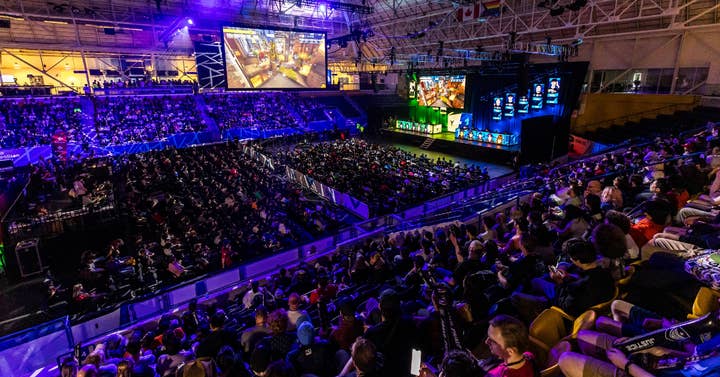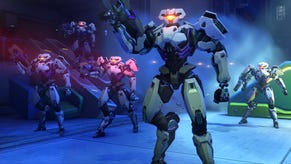Blizzard’s Overwatch League was ambitious and doomed | Opinion
One of the most interesting experiments in esports history comes to an expensive close – with the game itself struggling, the writing was on the wall for the league
When Blizzard announced the Overwatch League in 2016, there were plenty of questions about how the esports league would actually work – but at the very least, you couldn’t fault the ambition.
The company envisaged city-based team franchises located all around the world, with each of the separately-owned teams – who each paid tens of millions of dollars in franchise fees to join the league – expected to build an esports arena in their cities, with the hope of attracting large live audiences for the games as well as online streaming audiences.
Borrowing heavily from US sports’ business models, it was a big, bold idea; it was never entirely clear whether it was also a good idea, but it was certainly enough to whip up interest from teams, with twenty of them ultimately joining the league at costs ranging from around $20 million to an eye-watering $65m.
Ultimately, those plans did not long survive contact with reality. This week, the Overwatch League confirmed what those following it closely have suspected for months – after haemorrhaging teams for a while, it is to shut down entirely, a decision which will see Blizzard (thus, ultimately, new owner Microsoft) paying out around $120 million to compensate the franchise teams. Some kind of alternative future for Overwatch as an esport is still being planned, but the lofty ambitions of the OWL are no more.
Overwatch itself has had some pretty well-documented problems in recent years – we’ll get to them – and those certainly played a role in the downfall of the OWL, but many of the biggest issues were unrelated to the game itself.
As in so many recent business failures, the pandemic played a role – it effectively derailed the plans for arenas in every city, which had been intended as a major part of the business model for the franchise teams. In the absence of a physical arena and live audiences, the OWL was just another online esports league; the hope that powerful local fanbases would form for each city’s team never materialised.
The failure of this side of the business to materialise was compounded by Activision Blizzard’s high-profile reputational problems driving major advertisers away at a crucial point. Ultimately, the problems came down to monetisation; the league never made enough money to justify the huge costs of the franchise deals, or even Activision Blizzard’s continued interest.
Then, of course, there are the problems with Overwatch itself. This is a unique issue for esports. Nobody running a soccer tournament finds themselves fretting over whether ordinary players are still enjoying the latest update to the game rules, but it’s extremely hard to maintain viewer numbers for a professional esports league when the game itself is struggling to keep its players happy day-to-day.
This is a problem compounded by the rapid pace of evolution of many esports games. The games can be almost impossible to follow as a spectator unless you’re also a player who is up to date on new characters and recent version changes.
Honestly, Overwatch was a hard sell as a spectator sport to begin with, and despite being a popular and fun game, it was arguably a poor basis for something as ambitious as the OWL. It’s extremely messy and chaotic in its most intense moments – which is fun when you’re playing it, but extremely hard to watch and follow compared to many other games.
Regular major changes to the game’s balance and roster only make this even more complex – less of an issue if you’re holding on to a huge potential audience of people who play the game regularly and thus understand it well, but a huge problem if that addressable audience starts to drift or lose interest.
Looking back over the history of the game itself, it’s tempting to view aspects of it as a tug of war between what would serve the commercial interests of the esports league, and what would serve the enjoyment of ordinary players. Those are often very different things. What makes a game fun to play can be radically different from what makes it fun to spectate, and attempting to balance a game for professional play may leave you with something that is frustratingly unbalanced for everyday players with very different skill levels.
It’s hard enough to balance a game effectively for one audience; now try three audiences with competing demands, namely pro-level players, amateur-level players, and spectators. In attempting to satisfy all of those audiences, all too often it felt like Blizzard was satisfying none of them.

This doesn’t explain all of Overwatch’s problems – the controversial shift to a Battle Pass model with a premium currency shop, and the lengthy saga that culminated in the cancellation of most of the game’s PvE content, are far bigger shadows on the landscape in those regards – but juggling the competing demands of professional players in a hundred million dollar league, and those of people picking up a console controller for a few rounds to unwind after work, was an arguably impossible ask for a game this complex and diverse.
Perhaps, then, the real root of the problem is that Blizzard wanted to create and own an esport around its game, rather than allowing one to develop and mature organically. Blizzard had previously seen Starcraft turn into an esports phenomenon over which it had relatively little control and from which it gained relatively little profit.
With Call of Duty taking off as a grassroots esport at around the same time, Activision Blizzard was determined that it would have ownership over professional leagues that sprang from its games. This appears to have been a major miscalculation, and aside from the OWL’s failure being so expensive, it also feels like a major step back from the company’s ambitions.
Overwatch was a hard sell as a spectator sport to begin with, and despite being a popular and fun game, it was arguably a poor basis for something as ambitious as the OWL
If the esport had been a separate entity – built up from grassroots under its own steam, and held at arm's length from the development of a game which was primarily focused on satisfying ordinary consumers and players – it would probably have ended up being a more healthy and robust situation both for the professional league and for the game overall.
It remains to be seen whether Overwatch will be free to evolve in a more different and perhaps more player-focused way now that the OWL is disappearing; that will depend largely on what ultimately replaces the OWL, of course.
In that regard, though, expect the replacement to be much more conventional and small-scale, at least. It’s also not clear to what extent Microsoft is interested in esports as a part of its business strategy – it’s unlikely that it has the same level of interest in esports that Activision Blizzard had back when the company had starry-eyed dreams of Overwatch being the next NFL, at least.
At a guess, I’d imagine that Microsoft will prefer an arms-length treatment of esports, remaining supportive but eschewing direct involvement, though I should caution that I’m basing that solely on the company’s general approach thus far.
Who knows, perhaps there’s a real esports evangelist in a position of decision-making authority in Xbox – but if not, I’d imagine that Blizzard’s future engagements with esports will be much tamer than the soaring ambition that OWL was at its outset. The now-defunct league is a tantalising hint of a path not taken, and a future that might have been – but it will probably be primarily remembered as a lesson in expensive hubris.
Sign up for the GI Daily here to get the biggest news straight to your inbox



